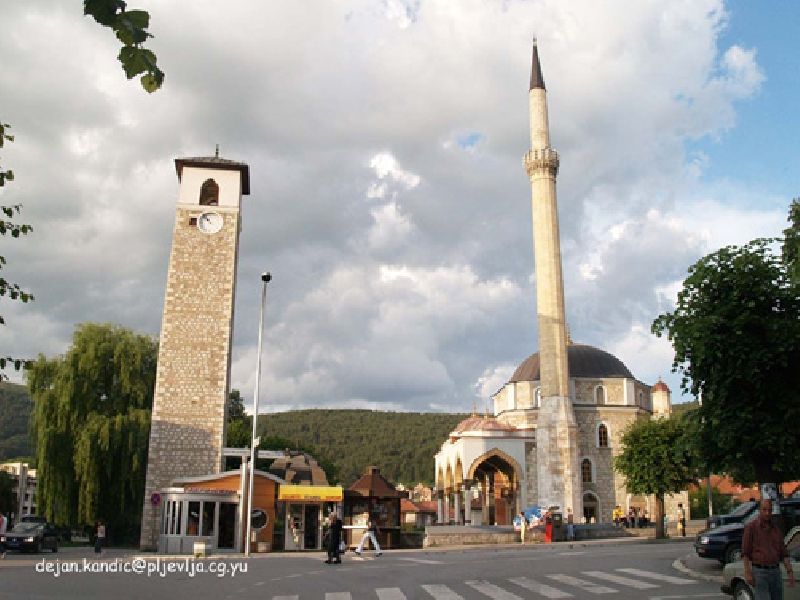June 1, 2018 - Husein-paša's Mosque (Montenegrin: Husein-pašina džamija) is a well-known and also the biggest mosque in Pljevlja, Montenegro. Located in the very center of Pljevlja, the Husein-paša's Mosque is one of the recognizable symbols of this city and is one of the most important monuments of history and tradition of Northern Montenegro. According to its tradition and its precious interior, this mosque is among the most important Islamic objects in the Balkans. Husein-paša's Mosque has unique architecture in Montenegro and is recognizable in the whole region as well.
Built in 1569, the mosque represents the endowment of Husein-paša Boljanić, an Ottoman statesman and government official who served many high-level positions in the Ottoman Empire. Since 1961 Husein-paša's Mosque has been under the protection of the Institute for the Protection of Cultural Monuments of Montenegro, as a cultural good of the first order and it is included in the cultural offer of Montenegro.
After the lightning strike in 1911, the endowment of Hussein Pasha's mosque was rebuilt, and with the reconstruction, the present height of the mosque is 42 meters, which makes it the highest endowment in the Balkans. The mosque has a square basis above which rises a low-pitched dome set on a pedestal with a cubic shape. An open porch covered with three small domes was formed in front of the main facade. The interior of the mosque is illuminated with 25 windows, while the dome is decorated with arabesques. The walls are made of stone. The interior has a hexagonal shape, and it is decorated with geometric motifs (decorative plastic with interlaced polygons, hexagons, six-pointed stars and stalactites).

The interior of the mosque is richly painted with colored ornaments with oriental motifs as well as quotations from the Qur'an. The mosque also has a collection of ancient manuscripts and books in Arabic and Turkish, as well as the Qur'an of the 16th century, richly decorated with gold, making it extremely valuable. The carpet that was made in 1573 in Egypt holds a special place in the mosque. According to the tradition that follows this carpet, it is said that 35 girls weaved it and it took them a month to create the carpet. When they completed it, the weight of the carpet was 400 kilograms. A particularly valuable Islamic relic kept in this mosque is the hair of the Prophet Muhammad's chin, which is believed to have been sent by the sultan to Pljevlja to raise the authority in the city. A special event that is related to this relic takes place on the 27th night of the month of Ramadan when it is exposed to visitors. During the event, several thousands of believers pass through the mosque, and they do not come only from Pljevlja, but also from nearby cities, such as Prijepolje, Bijelo Polje, Priboj, Sarajevo, etc.
This four and a half centuries old mosque was severely damaged, both in a constructive sense and on the artistic achievements of the mosque, which required the urgent undertaking of necessary sanitary interventions. In this regard, during 2006 and 2007, sanitary works were completed. During the renovation work, the building was secured, leaving the external and internal appearance of the mosque unchanged.








